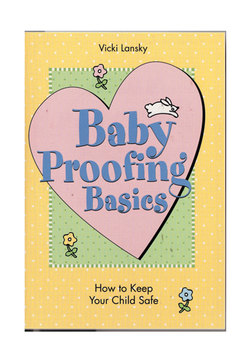Читать книгу Baby Proofing Basics - Vicki Lansky - Страница 9
На сайте Литреса книга снята с продажи.
GENERAL KITCHEN SAFETY RULES
ОглавлениеKeep the kitchen trash container with its hazardous sharp, pointed and otherwise dangerous contents, locked up in a broom closet or under the sink. Consider buying a self-locking garbage can or a trash compactor with a key, which, as long as you keep it closed, keeps trash out of reach.
Keep all cleaning materials, pesticides and other dangerous substances locked up.
Avoid pinched fingers by removing a swinging door between kitchen and dining room. Or secure it in an open position with a hook-and-eye latch or a doorstop your child can’t remove.
Never leave an even partially-full bucket, especially in the five-gallon size, on the floor. A curious child might fall into the bucket head first and drown. Don’t feel that this advice is over-precautionary. There are documented cases of such drownings.
Use unbreakable dishes and glasses for a young child.
Keep a dishwasher latched shut at all times. Knives, glass and detergent-for-tasting are all hazards.
Keep pet bowls and dishes out of a child’s reach. A cat’s dish might be kept on a small table or counter not used for food preparation. A dog’s food and water might be put in an outdoor fenced-in area or in the basement or garage.
Keep your playpen, if you use one in the kitchen, at least two feet away from work tops and the stove.
Put your stepstool away when it’s not in use. It can give a toddler a boost to the dangers of stovetop or counters.
Don’t put small magnets on a refrigerator door where a toddler can reach them. Magnets are easy to choke on.
Clean up spills on the floor immediately so neither you nor your child will slip and fall. And don’t use a wax that makes your floor slippery.
Don’t ever hold your baby in your arms while you cook. The possibilities for disaster are multiple. In the same vein, never carry your baby and a cup of coffee or other hot liquid at the same time.
